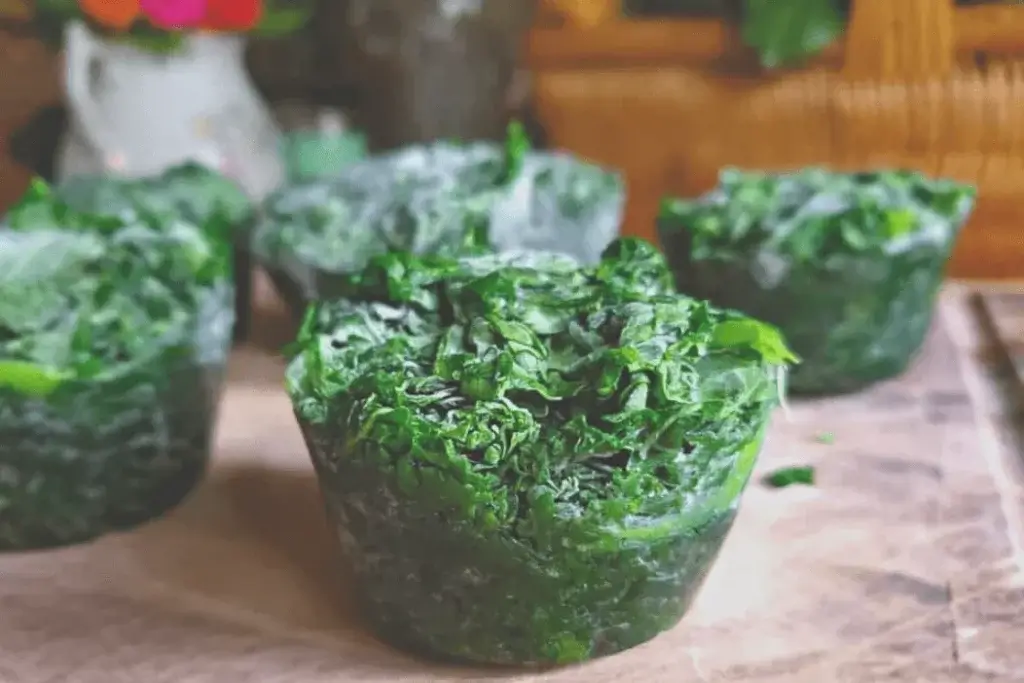Who doesn’t love fresh Swiss chards, especially during the summer? However, most of the time, the chard greens are available in much more quantity than you need. As a result, you have to discard the excessive greens. Well, not anymore! This guide explains how to freeze Swiss chard without losing its freshness.
The problem is that you can’t just throw fresh Swiss chard in the freezer and expect it to be fresh when thawed. Moreover, the leaves have a strong fragrance that can penetrate into other foods in the freezer. Therefore, you need to prepare it before freezing. Only then can you become a master who knows how to preserve swiss chard.
Table of Contents
Preparing the Swiss Chard Prior to Freezing:

The first step to preserving Swiss chard is to prepare it for freezing. Swiss chards are fresh whether you buy from a supermarket or cut from your kitchen garden. Fresh chard needs to be blanched because it contains microbes and dirt that can ruin a perfect batch of chards within a few hours of freezing.
Start by rinsing the Swiss chard with clean, cold water. Rub the chards to remove any debris from the greens.
Take a sharp knife and separate the leaves from the stem. This step is crucial because it is not wise to store swiss chard leaves and stems in the same bag.
Now you have two options, i.e., blanching and flash-freezing the Swiss chards.
Blanching Swiss Chard:
Blanching is the most commonly used method to preserve Swiss chard and other greens. You can use this method when preserving several fruits and vegetables to ensure a long life. Here is how to blanch Swiss chard:
Fill a pot with water and turn on the gas. Bring the water to a boil and cover the pot with a lid. Prepare another pot with ice-cold water in it.
Put the Swiss chard leaves in the boiling water and let them cook for exactly one minute. If you try to cook any further, the leaves will become mushy when you thaw.
Take out the leaves from the boiling pot using a sieved spoon and shake off any excess water. Put the leaves directly in the iced water and let it sit for one minute and then take it out with the same spoon and shake off the excess water.
Now, place the leaves on a paper towel and gently rub to soak any remaining water from the leaves. The Swiss chard is now ready for freezing.
The same procedure goes for the Swiss chard stems that you separated during the preparation stage.
Flash-freezing Swiss Chard:

If you are looking for a way of freezing swiss chard without blanching, flash-freezing is the method for you. It is a technique to preserve the freshness of the Swiss chard without cooking it even a little bit. The flash-freezing method is used by the chefs who only use fresh Swiss chard in their dishes. Here is how to freeze swiss chard without blanching:
Take a bowl and fill it with cold water. Put some ice in the water or leave it in the freezer till the temperature becomes close to zero.
Put the prepared Swiss chard leaves in the water and let them sit for at least 15 minutes. Take out the leaves from the water using a sieved spoon and shake off any excess water.
Dry out the leaves using a paper towel by gentle rubbing. Place the dried leaves on a baking dish. Make sure that no two leaves are touching each other, or else they might stick together after freezing.
Place the baking dish in the freezer and let it sit for at least 1 hour. Take out the baking dish and put the frozen Swizz chard leaves in a zip-lock plastic bag. Make sure to remove as much from the bag as possible by squeezing and sucking with a straw. Put the plastic bag in the freezer, and your frozen Swiss chard leaves stay good for up to three months.
You can use the same procedure for flash-freezing Swiss chard stems.
How to Freeze Swiss Chard by blanching?
The best way to freeze Swiss chard is by blanching it during the preparation stage. It allows the chard to stay fresh and edible for up to six months while retaining the same fresh taste.
After you have prepared the Swiss chard and blanched it, the next step is to freeze it.
Take a heavy-duty resealable plastic bag and fill it with the dried Swiss chard that you prepared earlier during blanching.
Squeeze out the extra air from the bag, and you can also suck out the air by using a straw. Seal the bag and throw it in the freezer. You can also refreeze Swiss chard after thawing it.
Cooking Suggestions:
Here are a few cooking suggestions to help you with Swiss chard:
- Frozen Swiss chard with blanching stays good for 6-12 months if you avoid refreezing it multiple times.
- Similarly, flash-frozen Swiss chard gives a fresh taste when thawed. However, it only remains good for 3-6 months.
- Thawing isn’t necessary for stir-frying Swiss chards.
- You can defrost Swiss chard by rinsing it with warm water.
- Another way to slowly thaw frozen chard is to leave it overnight in the fridge.
Frequently Asked Questions:
How to freeze Swiss chard greens?
The best way to freeze Swiss chard greens is to blanch them before freezing. Be sure to use a heavy-duty resealable plastic bag and dry out the greens before storing them in the freezer.
How to freeze Swiss chard stems?
You can freeze Swiss chard stems the same way as the greens. However, stems take longer to dry out, so it would be best to dry them by rubbing them in a paper towel after blanching.
How to flash freeze Swiss chard?
Flash-freezing is the best way to store Swiss chard without blanching. Submerge the chard greens in ice-cold water for 15 minutes before placing them on a baking dish. Put the baking dish in the freezer for 1 hour. Take out the frozen greens and store them in a plastic bag to store in the freezer for up to 6 months.
Conclusion:
What does Swiss chard look like after freezing? The same fresh look, just like green kimchi. There are two ways to freeze Swiss chard, blanching, and flash-freezing. Both methods are very effective in keeping the greens fresh for several months.







